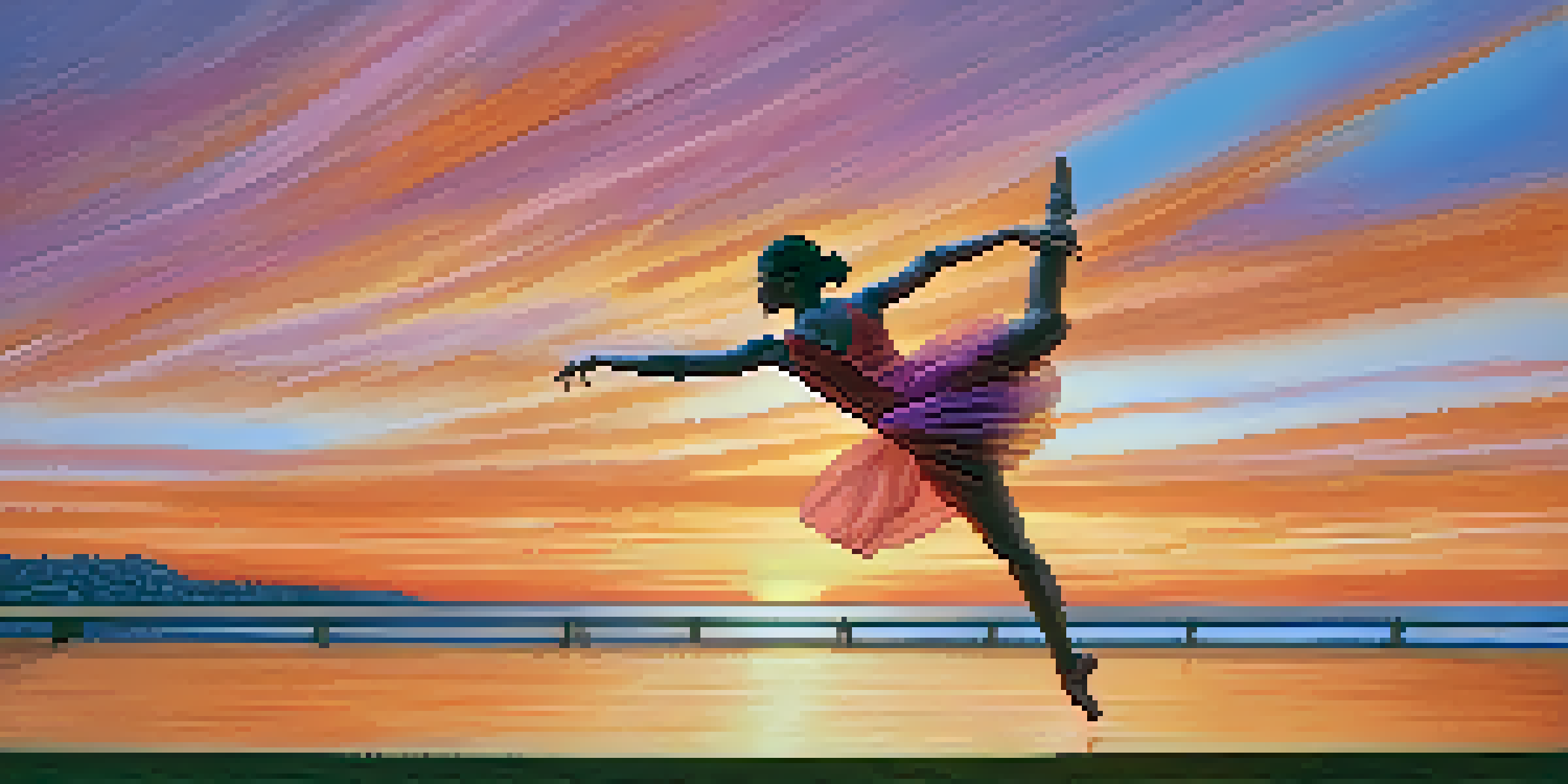Exploring the Role of Improvisation in Contemporary Dance

Understanding Improvisation in Dance Contexts
Improvisation in dance is like jazz music; it thrives on spontaneity and expression. Dancers often rely on their instincts to create movements in real-time, allowing for a unique performance every time. This element of surprise not only keeps the audience engaged but also encourages dancers to explore their creativity without restrictions. By embracing improvisation, dancers can connect more deeply with their bodies and emotions, making each performance a personal journey.
The Historical Roots of Dance Improvisation
To understand the role of improvisation in contemporary dance, we must look back at its historical roots. Early forms of dance, especially in African and Indigenous cultures, often included improvisational elements to tell stories and celebrate community. As modern dance emerged in the 20th century, pioneers like Martha Graham and Merce Cunningham incorporated improvisation to break free from traditional constraints. This evolution paved the way for contemporary dancers to experiment with movement, pushing the boundaries of expression.
Improvisation Fuels Creativity
Dancers leverage improvisation to tap into their subconscious, fostering unique movements and collaborative creativity.
How Improvisation Enhances Creativity
Improvisation acts as a powerful tool for enhancing creativity among dancers. When dancers improvise, they tap into their subconscious, leading to unexpected and innovative movements. This process not only fosters individual expression but also encourages collaboration among dancers, creating a dynamic interplay of ideas. As they share and build on each other's movements, a communal creativity emerges, turning each rehearsal into a vibrant creative workshop.
Improvisation Techniques in Contemporary Dance
Several techniques are employed to facilitate improvisation in contemporary dance. One popular method is the use of prompts or themes, guiding dancers while still allowing freedom of expression. Techniques like 'contact improvisation' encourage physical interaction between dancers, creating a dialogue through movement. These practices help dancers navigate the balance between structure and spontaneity, enriching their performances and making each one unique.
Historical Roots Enrich Modern Dance
Understanding the historical context of improvisation reveals its significance in storytelling and community celebration in dance.
The Role of Improvisation in Choreography
Improvisation is not just for spontaneous performances; it plays a crucial role in choreography as well. Many choreographers use improvisational exercises to generate new material, allowing dancers to explore movements that may not have been considered otherwise. This approach can lead to innovative choreography that feels fresh and alive, as the dancers' authentic expressions are woven into the final piece. By integrating improvisation into the choreographic process, the work becomes a living, breathing entity.
Improvisation as a Tool for Emotional Expression
One of the most compelling aspects of improvisation in dance is its ability to channel emotional expression. Dancers often find that improvising allows them to connect with their feelings on a deeper level, translating emotions into movement. This process can be cathartic, offering a release for both the dancer and the audience. As each dancer navigates their emotional landscape, they invite viewers to join in the experience, fostering empathy and connection through movement.
Emotional Expression Through Movement
Improvisation allows dancers to express their emotions deeply, creating a cathartic experience that resonates with audiences.
Challenges of Integrating Improvisation in Dance
Despite its many benefits, integrating improvisation into dance can come with challenges. Dancers may struggle with the fear of making mistakes or feel uncertain about their movements in an improvised setting. Additionally, balancing improvisation with the need for precision can be tricky, especially in a performance context. However, overcoming these challenges can lead to greater confidence and a more profound understanding of one's artistic voice.
The Future of Improvisation in Dance
As contemporary dance continues to evolve, the role of improvisation is likely to expand even further. With advances in technology and new artistic collaborations, we may see even more innovative uses of improvisation in performances. Dancers and choreographers are increasingly blending various art forms, creating immersive experiences that push the boundaries of traditional dance. The future of improvisation in dance promises to be an exciting exploration of creativity and expression.